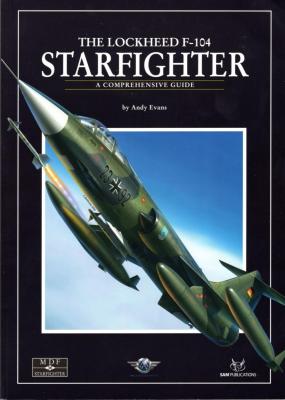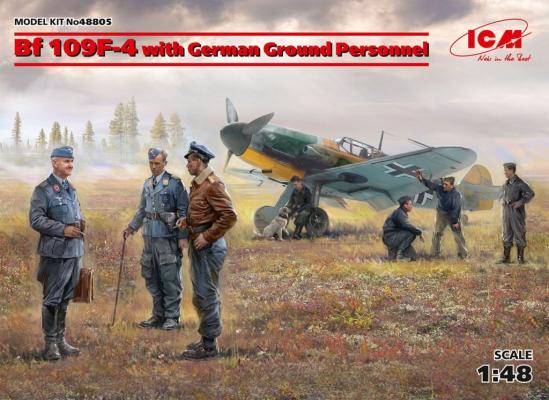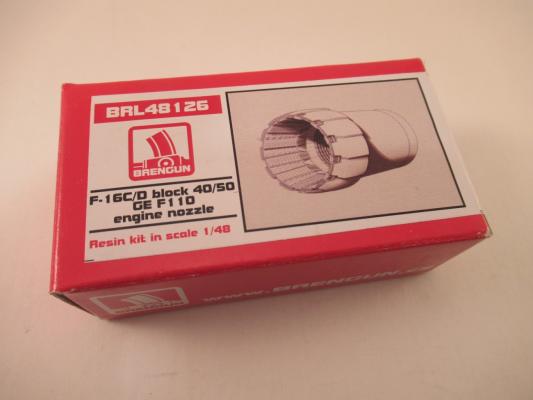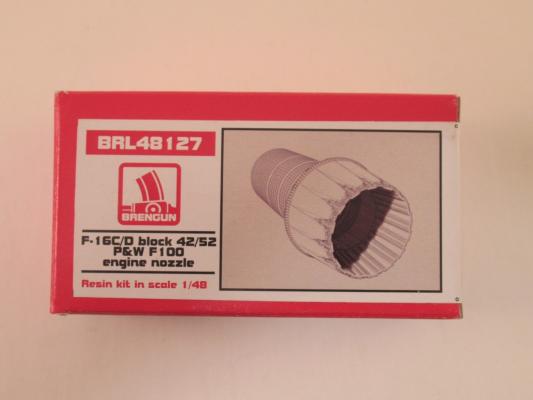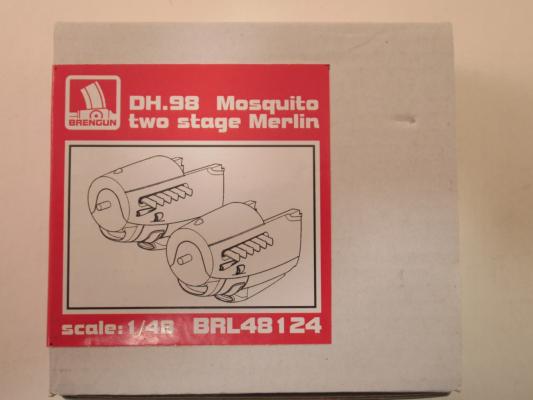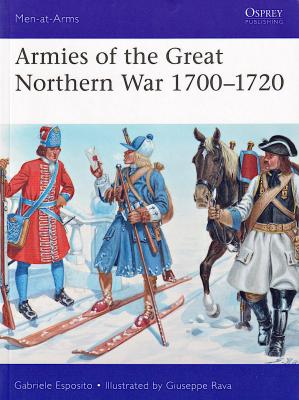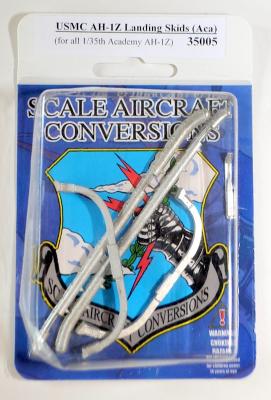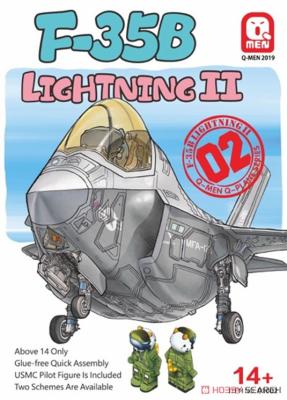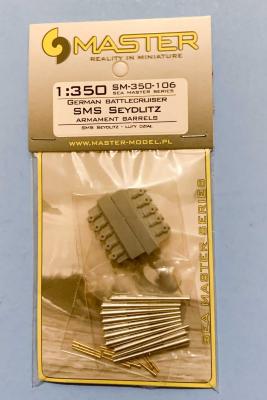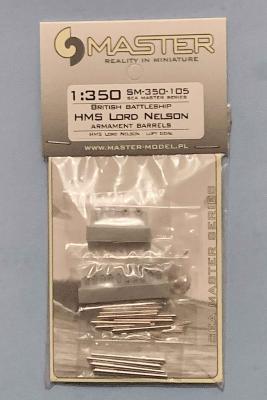This title is No. 36 in the MDF series of aircraft guidebooks issued by SAM Publications. It is an 8-1/4 inch by 11-5/8 inch, 184-page heavy paperback book printed on high-quality glossy paper. The beauty of this book easily lies in its many photographs, both black and white and color, of the “Missile With a Man In It”, the Lockheed F-104 Starfighter. Whether a modeler or not, if you like looking at pictures of the Starfighter, you will like this book. Photos of the plane abound from the Glossary through the Appendices.
What's New
ICM Holdings has re-issued their 1/48 Bf 109F that has been around since the mid 2000s. After these years (review is written in 2020) the molds are showing their age a tiny bit. There is some minor flash in some parts, but nothing that a few minutes with a blade and a sanding stick cannot correct.
The airplane itself comes in 3 grey sprues plus a clear sprue and it includes a full engine and a cowling that can be displayed open. In addition, this particular boxing includes a set of 7 figures in summer uniform plus a dog. I believe this is the first time this figure set has been released and the sculpting of the figures is outstanding. I’m not an expert on uniforms, but I think you get 3 officers and 4 enlisted personnel.
The new engine was added to the F-16 beginning with the Block 30. This engine was the General Electric F110-GE engine. Two versions were used on the F-16, the GE-100 on the Block 30 and 40. The Block 50 fitted the GE-129 model. They are virtually identical externally. This is set for the Tamiya F-16 kit, in particular the Aggressor and CJ kit,
Packaged in a sturdy cardboard box are three high quality grey resin pieces which in themselves are packaged in a resealable plastic bag. There is a small instruction sheet that tells you what you need to replace. There are no blemishes anywhere on any of the resin pieces. The detail is phenomenal throughout.
The Tamiya F-16 series of kits are phenomenal renditions of the real airplane. There are multiple boxings. This particular set is designed to replicate the exhaust of the Pratt and Whitney F-100 Exhaust used on the Block 42 and Block 52 aircraft. They are externally very similar. The Block 42 has the -200 version and the Block 52 uses the -229.
Packaged in a sturdy cardboard box are two pieces of light grey resin inside of a resealable plastic sleeve. The two parts are perfectly cast with no blemishes anywhere. The detail on both pieces is remarkable.
The exhaust nozzle is a gem. It includes beautiful detail inside and out. Compared to the kit parts which only hints at the detail, the resin exhaust is perfect. There are beautiful exhaust petals and actuators.
The other piece is the afterburner liner. The kit liner is nothing more than a smooth surface. The real thing and the resin one has exquisite detail.
The Tamiya Mosquito is a beautiful kit but it does have one drawback, it can’t be built into a two-stage version. The Airfix kit is the only way to get a two-stage Mosquito out of the box, but they are hard to find and not as easy to build as the Tamiya kit. A few other conversions have been done but they are long out of production. So if you want the build one of the high altitude variants, such as the FB Mk. IX, Mk. XVI, NF XV, or PR Mk.34 or any of the later variants you’ll need this resin set.
Packaged in a sturdy cardboard box with eight resin pieces, two upper engine nacelles, two lower nacelles and four exhaust stacks. Also included is a fret of photo etch to make the intake screens. The parts are protected in a resealable bag. The resin is light grey and absolutely flawless. Test fitting the resin upper and lower cowling proved that the fit was perfect. And that is without even removing the pour blocks.
Osprey is renowned for their concise histories of the rarer conflicts around the globe. This edition covering “Armies of the Great northern War:1700-1720) is just such an edition, covering the Great Northern War which was fought in the Baltic region and ranged all the way from Norway to southern Ukraine. In the end, it led to the destruction of the Swedish Empire acquisitions in the war of 1618-48 as well as transformation of Russia under Peter the Great. The book is 48 pages in the standard Osprey size and is illustrated with color plates, maps and text describing all the combatants and battles.
Chapters included are:
Thank you to Phil and Bill for all that you do managing and providing review opportunities!
Recommended kit: Any 1/35 Academy AH-1Z
Reviewer’s Comments
This landing skid set from SAC is a direct replacement for the kit parts. The white metal casting is superb as is usual for SAC. The kit consists of five parts: two main skids, one tail skid, and two skid braces.
Instructions are not provided, but they are not required since the parts are intended to be direct replacements for the kit parts. The parts are very nicely detailed, and clean. There are no mold seams visible, and no sanding or filing was required.
Prior to painting it is recommended to wash the parts with a mild detergent solution to remove any remaining mold release. I would recommend using a gel-type of CA adhesive to bond the parts together.
QMEN is part of the Kitty Hawk Panda family and specializes in egg planes - planes shaped like an egg. These have been around from many manufacturers and are simplified versions of the real plane. In this case the plane is 19 parts and the pilot is an additional 13 plus a resin head. And the pilot is a kitty cat! There is even a tail and ears sticking out of a nice rendition of the F-35’s special helmet. The kit is meant to be snap fit and the tolerances are pretty tight so it all works. More on that later. The parts are well molded with no flash. Great color instructions and painting guide come with it and there is a sheet of water slide decals.
SMS Seydlitz was a battlecruiser of the German Kaiserliche Marine (Imperial Navy), built in Hamburg. She was ordered in 1910 and commissioned in May 1913, the fourth battlecruiser built for the High Seas Fleet. She was named after Friedrich Wilhelm von Seydlitz, a Prussian general during the reign of King Frederick the Great and the Seven Years' War. Seydlitz represented the culmination of the first generation of German battlecruisers, which had started with the Von der Tann in 1906 and continued with the pair of Moltke-class battlecruisers ordered in 1907 and 1908. Seydlitz featured several incremental improvements over the preceding designs, including a redesigned propulsion system and an improved armor layout. As with the rest of the German battlecruisers that survived the war, the ship was interned in Scapa Flow in 1918. The ship, along with the rest of the High Seas Fleet, was scuttled in June 1919, to prevent her seizure by the British Royal Navy.
HMS Lord Nelson was a pre-dreadnought battleship launched 04-September-1906 and completed in 1908. Her sister ship in the class was HMS Agamemnon also launched 23-June-1906 and completed in 1908. The delays between launching and completion of both ships was due to the diversion of their 12” guns to the completion of HMS Dreadnought. She was the Royal Navy's last pre-dreadnought. The ship was flagship of the Channel Fleet when the First World War began in 1914. Lord Nelson was transferred to the Mediterranean Sea in early 1915 to participate in the Dardanelles Campaign. She remained there, becoming flagship of the Eastern Mediterranean Squadron, which was later re-designated the Aegean Squadron. After the Ottoman surrender in 1918 the ship moved to the Black Sea where she remained as flagship before returning to the United Kingdom in May 1919. Lord Nelson was placed into reserve upon her arrival and sold for scrap in June 1920.

